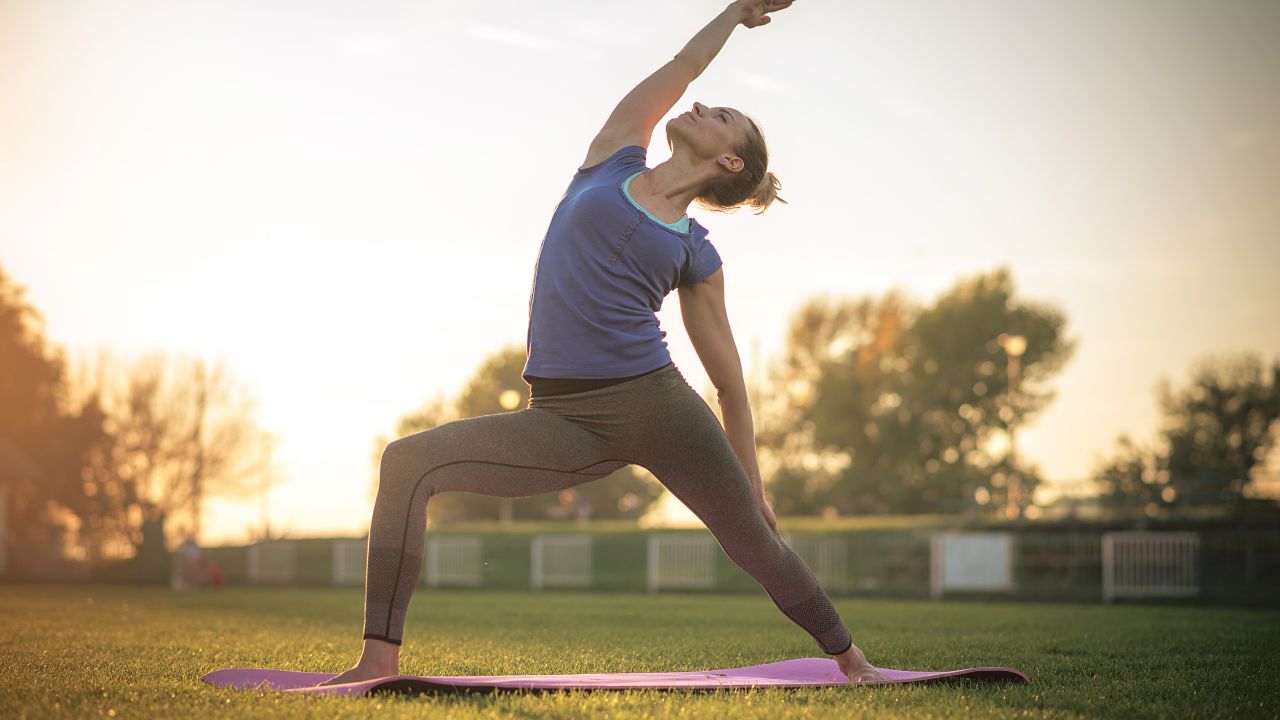Revolved Side Angle Pose (Parivrtta Parsvakonasana)

Revolved Side Angle Pose, or Parivrtta Parsvakonasana, is a dynamic standing pose that combines a deep lunge with a spinal twist. This pose engages the legs, hips, and core while providing a stretch to the chest, shoulders, and spine. Here’s how to practice Revolved Side Angle Pose:
- Begin in a standing position at the top of your mat, with your feet together and your arms at your sides.
- Step your left foot back, keeping the right foot pointing forward. Align your right heel with the arch of your left foot, creating a wide stance.
- Bend your right knee, lowering your hips into a lunge position. Make sure your right knee is directly over your ankle and your thigh is parallel to the ground. Keep your left leg extended and engaged, with your back heel lifted off the mat.
- Inhale and bring your hands to your heart center, palms together.
- Exhale and twist your torso to the right, bringing your left elbow to the outside of your right thigh. Press your elbow into your thigh to deepen the twist. Keep your chest lifted and your spine long.
- Place your right hand on your lower back or extend it toward the sky, opening your chest. If you have the flexibility, you can even bind your right arm around your right thigh, reaching for your left inner thigh or outer hip.
- Maintain a strong foundation in your legs, engaging your quadriceps and grounding through the feet. Keep your core engaged to support the twist and maintain balance.
- Gaze either straight ahead or up toward the raised hand, depending on your comfort level and neck flexibility.
- Breathe deeply and hold the pose for several breaths, allowing the twist to deepen with each exhale. Feel the expansion in your chest and the lengthening of your spine.
- To release the pose, inhale and unwind the twist, bringing your hands back to your heart center. Straighten your right leg and step your left foot forward to meet the right foot. Return to a standing position at the top of your mat.
- Repeat the pose on the other side, stepping your right foot back and twisting to the left.
Some key points to remember while practicing Revolved Side Angle Pose:
- Keep your knee aligned with your ankle in the front leg to protect your knee joint.
- Engage your core muscles to support your spine and maintain stability.
- Use your breath to deepen the twist, inhaling to lengthen the spine and exhaling to deepen the twist.
- Modify the pose as needed by adjusting the depth of the lunge or using a block for support.
Benefits of Revolved Side Angle Pose include:
- Stretches and strengthens the legs, particularly the quadriceps, hamstrings, and glutes.
- Opens the hips and improves hip mobility.
- Engages the core muscles and improves balance.
- Stimulates digestion and detoxification.
- Enhances spinal flexibility and mobility.
As with any yoga pose, it’s important to practice with awareness and listen to your body. If you have any specific concerns or limitations, it’s advisable to consult with a qualified yoga teacher for guidance. Enjoy the energizing and twisting benefits of Revolved Side Angle Pose.
Specific Content Keywords : revolved side angle pose parivrtta,parsvakonasana meaning,revolved side angle pose benefits,baddha parivrtta parsvakonasana,revolved side angle pose sanskrit,parivrtta parsvakonasana preparatory poses,parivrtta parsvakonasana meaning,revolved side angle pose modifications,revolved side angle pose,revolved side angle pose benefits,revolved side angle pose yoga,revolved side angle pose variations.

